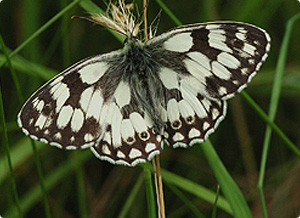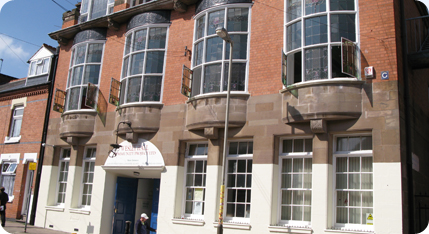Marbled White Butterfly
Melanargia galathea
Members adopting this butterfly: Glen, David
Marbled White Butterfly
The Marbled White is black and white. Female Marbled White butterflies are slightly larger than male butterflies. They enjoy sun bathing and will not fly away quickly when approached. They have a slow, distinctive flight.
When you might see them
You may see Marbled White butterflies during July and the summer. They are most commonly found in Dorset, Wiltshire, Somerset, the home counties and Devon.
Food
They like to feed on Knapweed, thistles or other roadside flowers. They feed with their wings tightly closed.
Where – Habitat
You may find this type of butterfly on grassland, chalk or limestone when they are ready to breed. They can be found near roadside verges or railway embankments. You may find this type of butterfly in large numbers mostly in the south.
Marbled White Eggs
The egg is spherical and its colour varies from pale green to white. A Marbled White butterfly will drop the egg rather than laying it. A female Marbled White butterfly is different from other butterflies because she is not selective about the place she will choose to lay her egg.
When
The egg may be dropped during July. The egg will hatch after 3 weeks.
Marbled White Caterpillar
This caterpillar can grow 28mm long and can look pale brown or yellowish green. It has two darkish lines along its back and has a lighter coloured line on each side of it covered with short hairs.
When
Marbled White caterpillars start to emerge in August.
Food
The caterpillars feed on grasses such as Tor-grass, Sheep’s-fescue, cock’s-foot, Timothy and Red Fescue.
Where
For hibernation the caterpillar will crawl into a small piece of dead vegetation.
Marbled White Chrysalis
A Marbled whites chrysalis is 12-15mm long and its colour is pale brown.
When
A Marbled White caterpillar will be ready to become a chrysalis at the end of May.
Where
It is found on the surface of the ground or under moss.
Books used to find information
Britain’s Butterflies
A field guide to the butterflies of Britain and Ireland.
Written by David Newland, Robert Still, David Tomlinson and Andy Swash
The Butterflies of Britain and Ireland
Written by Jeremy Thomas and Richard Lewington
Guide to the butterflies of Britain
Written by John Bebbington
Usborne Spotter’s Guides – Butterflies
Written by George E. Hyde
BBC Gardeners World Magazine
Issue July 2011
Click here to go to our Mental Health Services, Members Welcome You page




